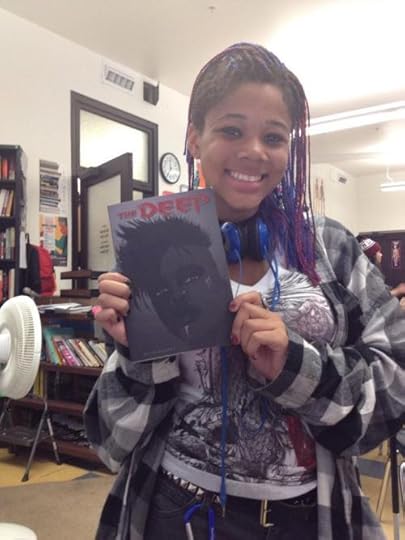Zetta Elliott's Blog, page 51
November 26, 2014
ghost
 I woke at 4:30am on Monday, an hour ahead of my alarm. I was so looking forward to my day in DC that I couldn’t sleep, and I knew I’d have time to doze on the train. I think I’ve been fixated on dandelions and hummingbirds because I realize how central movement is to my identity. I’m a homebody but I’m also a migrant; I’m a creature of habit and cling to my little routines, but every so often I still need to uproot myself and move. I think it’s in my blood. My father was restless and when he slipped into one of his moods, he would get in the car in drive—sometimes around the city, sometimes across the border. I prefer the comfort of Amtrak’s quiet car (no driving means more dreaming). I didn’t get a window seat on the way down to DC, but I still spent the three hours dozing and daydreaming and wondering just how I manage to live this life. I can leave NYC and slip into some other city like a ghost, totally anonymous, invisible, not speaking except to ask for directions. The Amtrak agent said I could take the Metro to the National Mall but I looked at the map and it didn’t look that far. Of course, my feet are blistered now because I wound up walking 20K steps on Monday. I walked from Union Station to the Lincoln Memorial, stopping to visit a few gardens and the Museum of African Art along the way. Then I backtracked and went to the MLK Memorial before walking up to Busboys & Poets at 14th and V. And that whole time no one spoke to me except one brother on the street, and by that point in the day I didn’t even mind because I’d had enough silence to satisfy me. Indie bookstores want authors to support them and I generally do, but some indie bookstores are better than others and the Teaching for Change bookstore (which is inside the cafe) is THE BEST. I don’t think I’ve ever seen so many of my titles prominently displayed in a bookstore. I bought a copy of Brown Girl Dreaming while chatting with the sales guys about Ursula Le Guin’s speech at the National Book Awards and the potential of WNDB to create lasting change in the publishing industry. Then I sank into one of the cafe’s plush sofas, ordered a pomegranate lemonade, and disappeared again inside Jackie’s beautiful book. The ladies arrived two hours later and by then I was no longer a ghost; people who knew me called me by my name and my anonymity was gone. There were two women in our party I’d never met before, Nina and Kya, but we all chatted and laughed and shared food as if we’d known one another forever. And that is the migrant’s miracle…in an instant, any place can become home. I *really* like DC. As I dragged myself up 14th Street I could see signs pointing to Carter G. Woodson’s house; many of the blocks I looked down were lined with row houses that looked more than a hundred years old and I thought to myself, “There’s history here.” Other ghosts with stories to tell. I will definitely be going back…
I woke at 4:30am on Monday, an hour ahead of my alarm. I was so looking forward to my day in DC that I couldn’t sleep, and I knew I’d have time to doze on the train. I think I’ve been fixated on dandelions and hummingbirds because I realize how central movement is to my identity. I’m a homebody but I’m also a migrant; I’m a creature of habit and cling to my little routines, but every so often I still need to uproot myself and move. I think it’s in my blood. My father was restless and when he slipped into one of his moods, he would get in the car in drive—sometimes around the city, sometimes across the border. I prefer the comfort of Amtrak’s quiet car (no driving means more dreaming). I didn’t get a window seat on the way down to DC, but I still spent the three hours dozing and daydreaming and wondering just how I manage to live this life. I can leave NYC and slip into some other city like a ghost, totally anonymous, invisible, not speaking except to ask for directions. The Amtrak agent said I could take the Metro to the National Mall but I looked at the map and it didn’t look that far. Of course, my feet are blistered now because I wound up walking 20K steps on Monday. I walked from Union Station to the Lincoln Memorial, stopping to visit a few gardens and the Museum of African Art along the way. Then I backtracked and went to the MLK Memorial before walking up to Busboys & Poets at 14th and V. And that whole time no one spoke to me except one brother on the street, and by that point in the day I didn’t even mind because I’d had enough silence to satisfy me. Indie bookstores want authors to support them and I generally do, but some indie bookstores are better than others and the Teaching for Change bookstore (which is inside the cafe) is THE BEST. I don’t think I’ve ever seen so many of my titles prominently displayed in a bookstore. I bought a copy of Brown Girl Dreaming while chatting with the sales guys about Ursula Le Guin’s speech at the National Book Awards and the potential of WNDB to create lasting change in the publishing industry. Then I sank into one of the cafe’s plush sofas, ordered a pomegranate lemonade, and disappeared again inside Jackie’s beautiful book. The ladies arrived two hours later and by then I was no longer a ghost; people who knew me called me by my name and my anonymity was gone. There were two women in our party I’d never met before, Nina and Kya, but we all chatted and laughed and shared food as if we’d known one another forever. And that is the migrant’s miracle…in an instant, any place can become home. I *really* like DC. As I dragged myself up 14th Street I could see signs pointing to Carter G. Woodson’s house; many of the blocks I looked down were lined with row houses that looked more than a hundred years old and I thought to myself, “There’s history here.” Other ghosts with stories to tell. I will definitely be going back…

l-r: Edith Campbell, Nina Candia, me, Ebony Thomas, Kya Mangrum, Deborah Menkart
November 25, 2014
a singing tree
I have a headache today but I don’t want to take any aspirin. I have a headache because I need to cry but I don’t want to cry because what good would that do? I think today should be about discomfort. This morning I said I would practice radical self-care and saw myself going to the park for a run, but instead I just came home with two slices of pizza. Tomorrow my doctor’s going to tell me that I am pre- pre-diabetic; my lab results were posted online and I worked it out for myself. I have to lose 7% of my body weight and that means giving up sugar. Something sweet and a cup of tea—that’s what comfort looked like when I was a child. And yes, obesity and diabetes run in the family. Yesterday I pitied myself for having to give up sugar but today it feels appropriate. I tried to “stay positive” this morning. I read and responded to some kids in Colorado who read Bird and sent me their reviews and artwork. I decided to send them my latest books when one girl, Anastasia, urged me to “keep riting.” 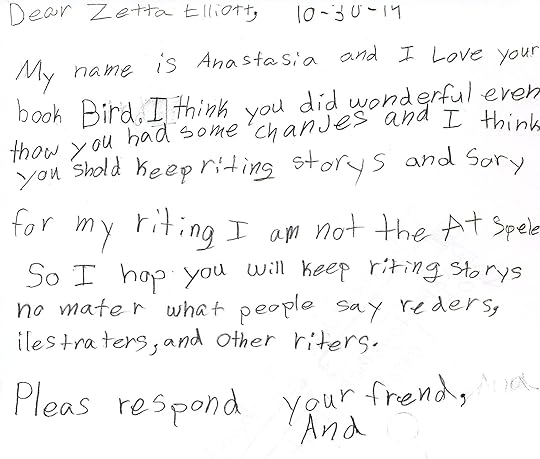 But then I listened to analysis of the Ferguson crisis on the radio and wound up going out into the grey day scowling. The clerk behind the glass at the post office was chatting with her friend and I decided not to be annoyed; maybe they’re talking about Ferguson, I thought, but then she leaned in and told me that one of their colleagues had died suddenly overnight. “You never know when your time will come,” she said before wishing me a good day. I offered my condolences and then went over to the farmer’s market, bypassed all the people buying fresh vegetables for Thanksgiving, and went straight for the pastry tent. I was good, I bought a sugar-free apple pocket, and decided to walk a few extra blocks to the train. Then a young white man asked the Black woman in front of me, “Would you like to help save the polar bears?” and I muttered, “Get the f*** out of here with that mess.” Not because I don’t love polar bears but because he has the nerve to expect Black women to care about his cause when he probably doesn’t care about ours. I don’t think he heard me and I know I’m making a lot of assumptions, but today I feel I have that right.
But then I listened to analysis of the Ferguson crisis on the radio and wound up going out into the grey day scowling. The clerk behind the glass at the post office was chatting with her friend and I decided not to be annoyed; maybe they’re talking about Ferguson, I thought, but then she leaned in and told me that one of their colleagues had died suddenly overnight. “You never know when your time will come,” she said before wishing me a good day. I offered my condolences and then went over to the farmer’s market, bypassed all the people buying fresh vegetables for Thanksgiving, and went straight for the pastry tent. I was good, I bought a sugar-free apple pocket, and decided to walk a few extra blocks to the train. Then a young white man asked the Black woman in front of me, “Would you like to help save the polar bears?” and I muttered, “Get the f*** out of here with that mess.” Not because I don’t love polar bears but because he has the nerve to expect Black women to care about his cause when he probably doesn’t care about ours. I don’t think he heard me and I know I’m making a lot of assumptions, but today I feel I have that right.
I will turn this day around. I’m reading Jacqueline Woodson’s Brown Girl Dreaming and that’s a balm for the soul. In the pizza shop they were playing Ella Fitzgerald and Louie Armstrong, and singing along to “They Can’t Take That Away from Me” made me feel better for a few minutes. We still have something to hold onto. They haven’t stripped the whole tree bare. “One plum was saved for me, one seed becomes/An everlasting song, a singing tree…”
November 23, 2014
the seed within
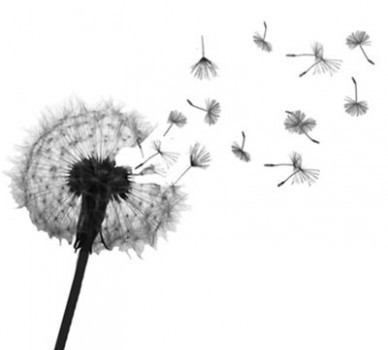 Lately I’ve been thinking about seeds. I need to design a new Rosetta Press logo and want to add some art to my website landing page (possibly a dandelion). I woke up this morning with Jean Toomer’s words from Cane in my mind: “One seed was saved for me.” Which I misremembered—it’s “plum,” not “seed”—but the sentiment is the same. With the mass protests in Mexico over the government-involved disappearance of 43 students, this meme has been circulating on Facebook: “They tried to bury us. They didn’t know we were seeds.” And then a couple of days ago I declared myself “too through” with the publishing industry but a wise friend pushed back:
Lately I’ve been thinking about seeds. I need to design a new Rosetta Press logo and want to add some art to my website landing page (possibly a dandelion). I woke up this morning with Jean Toomer’s words from Cane in my mind: “One seed was saved for me.” Which I misremembered—it’s “plum,” not “seed”—but the sentiment is the same. With the mass protests in Mexico over the government-involved disappearance of 43 students, this meme has been circulating on Facebook: “They tried to bury us. They didn’t know we were seeds.” And then a couple of days ago I declared myself “too through” with the publishing industry but a wise friend pushed back:
ME: reacting to racism sucks up SO much of our time and energy and limited resources. They give us more money and we keep working to “fix” people who don’t want to be fixed…
NATHALIE: Though you might feel at times it’s waste of your time, your voice is missed if you don’t keep speaking up. Just one seed sowed can sprout a hundred, and more. Whether it be through pushing with the stories you miraculously manage to put out there, or answering a simple FB post. Thanks for giving the latter another try. It’s not in vain.
This morning I read an article sent to me by Libertad about race and the absence of racism in The Hunger Games and other YA dystopian books-to-films. I just saw Mockingjay on Friday and didn’t have much to say at the end. More Black folks dressed as sharecroppers (I guess they’re still picking cotton), more PoC looking to Katniss for salvation (which quickly gets them killed, of course), and a couple more secondary characters to replace Cinna and Rue. I don’t think I saw any Asians in the film, maybe one Latino. The article ends with a consideration of Octavia Butler’s novel Parable of the Sower, which again got me thinking about seeds. I haven’t read the Bible in ages but if I remember correctly, the lesson for the sower is not to waste time throwing seeds on unreceptive soil since seeds will only thrive under the right conditions. But Nathalie’s point is that if you scatter seeds by speaking out, you never know how many people you might reach. This morning on Twitter folks have been sharing a quote from my 2013 conversation with Ibi Zoboi, “Black Girls Hunger for Heroes, Too.”
ZETTA: I haven’t read the trilogy, but I watched the first film at home and the second one in the theater. And when it got to the part where Gale was being whipped, I could sense the tension in the [interracial] audience. And I thought to myself: “How many people in here went to see 12 Years a Slave?” It’s interesting to me that in the white imagination, the dystopian future involves white people living through the realities that people of color have lived or are living through right now!
You never know how far your words may travel, or where they’ll take root and grow. And sometimes seeds can thrive even under less than optimal conditions, which is what it means to live as a person of color in this country. Ferguson is simmering. Just thinking about the potential for state-sponsored violence against the people makes me queasy. But I carry this seed within:
In a time of destruction, create something.
Thank you, Maxine Hong Kingston.
Song of the Son
By Jean Toomer
Pour O pour that parting soul in song,
O pour it in the sawdust glow of night,
Into the velvet pine-smoke air tonight,
And let the valley carry it along.
And let the valley carry it along.
O land and soil, red soil and sweet-gum tree,
So scant of grass, so profligate of pines,
Now just before an epoch’s sun declines
Thy son, in time, I have returned to thee.
Thy son, I have in time returned to thee.
In time, for though the sun is setting on
A song-lit race of slaves, it has not set;
Though late, O soil, it is not too late yet
To catch thy plaintive soul, leaving, soon gone,
Leaving, to catch thy plaintive soul soon gone.
O Negro slaves, dark purple ripened plums,
Squeezed, and bursting in the pine-wood air,
Passing, before they stripped the old tree bare
One plum was saved for me, one seed becomes
An everlasting song, a singing tree,
Caroling softly souls of slavery,
What they were, and what they are to me,
Caroling softly souls of slavery.
November 21, 2014
Celebrate Jackie!
 Jacqueline Woodson won the National Book Award! She won, she won, she won! I’m so proud of her, and that’s all I’m going to say. The internet’s full of all the other stuff so I won’t waste my breath/ink on that mess, though I strongly encourage you to read Nikky Finney’s brilliant response. Jackie won, and hopefully that will set more brown girls dreaming…
Jacqueline Woodson won the National Book Award! She won, she won, she won! I’m so proud of her, and that’s all I’m going to say. The internet’s full of all the other stuff so I won’t waste my breath/ink on that mess, though I strongly encourage you to read Nikky Finney’s brilliant response. Jackie won, and hopefully that will set more brown girls dreaming…
November 15, 2014
moving day
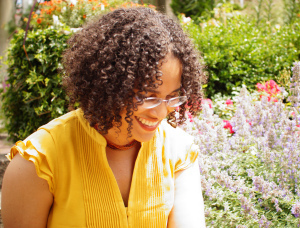
photo by Valerie Caesar
My new website is up and running—and I love it! I will be blogging over there from now on, so I hope you’ll take a look. You can also find my essays, videos, and other important links over there. I will check with my web designer to see if current subscribers need to sign up again at the new site (I don’t think so). Just had the most amazing afternoon at the Brooklyn Museum Children’s Book Fair…sold almost all my books and had people coming back for titles that had sold out. Some people even asked to see An Angel for Mariqua, which I was editing whenever I had a spare moment. The demand is real! I know it, I say it all the time, but there’s nothing like seeing parents and kids excited about the books I create! I’ll have 2 more titles ready for December so stay tuned. You can read my blog, “like” my Author Zetta Elliott page on Facebook, and/or follow me on Twitter (@zettaelliott). The new website gives you the option of signing up for my newsletter, too. See you over there!


November 7, 2014
quality, quantity, context
![Pageflex Persona [document: PRS0000038_00051]](https://i.gr-assets.com/images/S/compressed.photo.goodreads.com/hostedimages/1415421438i/11786271.jpg) I’ll be speaking on an Afrofuturism panel at Brooklyn College next week, and I hope I’ll have the chance to talk about After Earth. Most critics panned the film but for Black youth (boys in particular), that film is groundbreaking—something white reviewers just don’t get. Sometimes I think it’s not worthwhile to send my books out for review because many reviewers fail to situate the book within Black storytelling traditions and within the context of the publishing industry (what’s already available—or not). So I’m especially grateful to Charlotte over at Charlotte’s Library for her thoughtful review of The Phoenix on Barkley Street and her provocative, appropriate introduction:
I’ll be speaking on an Afrofuturism panel at Brooklyn College next week, and I hope I’ll have the chance to talk about After Earth. Most critics panned the film but for Black youth (boys in particular), that film is groundbreaking—something white reviewers just don’t get. Sometimes I think it’s not worthwhile to send my books out for review because many reviewers fail to situate the book within Black storytelling traditions and within the context of the publishing industry (what’s already available—or not). So I’m especially grateful to Charlotte over at Charlotte’s Library for her thoughtful review of The Phoenix on Barkley Street and her provocative, appropriate introduction:
Quick–think of a fantasy book written for early elementary aged kids of 8 or so, where the fantasy stars a group of minority kids and takes place in an urban neighborhood where gangs and abandoned properties are big problems, just like they are in many place[s] in real life, and where the fantasy part itself is something truly beautiful and magical and hopeful….
I can think of one, because I just read it– The Phoenix on Barkley Street, by Zetta Elliott (self published, August 2014, ages 7-9), and tomorrow I will take it to a Little Free Library that is in just such a neighborhood, and hope that it falls into the hands of young readers who haven’t yet been told that magic can happen to kids just like them.
So glad the book will find its way into kids’ hands! Charlotte concludes her review with a working list of first chapter books/young elementary school books that are fantasies with kids of color—and only 3 titles made the list, including another one of mine, The Magic Mirror. Does that mean a reviewer has to declare my book a masterpiece? No. But I think it’s important to see this book not just as a story, but an intervention:
So it’s a good story, and the writing is just right for a third or fourth grade reader getting their reading legs under them, as it were, and yay! for diversity and urban fantasy targeted at this age group. And yay! for kids of color in fantasy books for elementary school readers–I think it’s awfully important to have lots of these, so that ever[y] kid can be given a place at the table of the imagination, and there really aren’t many at all. Once you know that you can be in a fantasy story, you can allow yourself to dream whatever you want…..
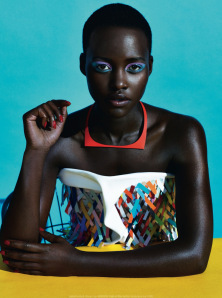 I’m making progress on The Return and am thoroughly enjoying reviewing the chapters I wrote while I was in Dakar last July. I think Book 3 in the “freaks & geeks” trilogy will be shorter than Book 2, but fast-paced. Today I’m hoping to write the chapter that features a djeli (historian/storyteller) who looks a lot like Lupita Nyong’o…
I’m making progress on The Return and am thoroughly enjoying reviewing the chapters I wrote while I was in Dakar last July. I think Book 3 in the “freaks & geeks” trilogy will be shorter than Book 2, but fast-paced. Today I’m hoping to write the chapter that features a djeli (historian/storyteller) who looks a lot like Lupita Nyong’o…


November 5, 2014
a) political
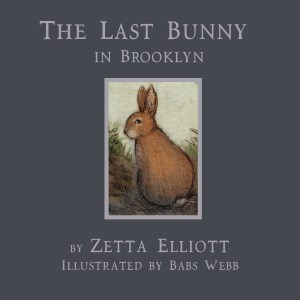 Children’s literature is not neutral. It can be educational and entertaining, but books for kids also tell us something about our society and ourselves. As I wrote in my last HuffPo essay,
Children’s literature is not neutral. It can be educational and entertaining, but books for kids also tell us something about our society and ourselves. As I wrote in my last HuffPo essay,
There’s clearly a direct link between the misrepresentation of Black youth as inherently criminal and the justification given by those who brazenly take their lives. The publishing industry can’t solve this problem, but the relative lack of children’s books by and about people of color nonetheless functions as a kind of “symbolic annihilation.” Despite the fact that the majority of school-age children in the US are now kids of color, the US publishing industry continues to produce books that overwhelmingly feature white children only. The message is clear: the lives of kids of color don’t matter.
I’m not a citizen so I can’t vote—and that stings a bit when I look at yesterday’s election results. But even if I can’t vote, I can still remain politically engaged as a writer and educator—and self-publisher. The Last Bunny in Brooklyn, my allegory about race and social dislocation, is available online now (you should be able to order it from bookstores within a week). And I’m excited to be working with this talented illustrator once more; Babs is making amazing progress on Fox & Crow: a Christmas Tale, and I hope to publish that illustrated book along with my middle grade novel, An Angel for Mariqua, next month. Mariqua’s mom is incarcerated—Black women’s rising rates of incarceration mattered to me back in 2000 when I wrote this novel, and it still matters today. Be sure to check out the Crunk Feminist Collective’s new series: Voices from Inside, which lets women in prison tell their story, their way…


November 3, 2014
cell
 I used to tell people that I lived under a rock. I’m an HSP and one way I manage my various sensitivities is by withdrawing from the world; my home is my sanctuary and I try to keep it clutter-free by conducting regular purges so that I only keep the things I truly need and use. Last year I briefly considered downsizing and moving into a studio apartment. There’s something appealing about letting go of one’s possessions; as much as I love the antiques I inherited from my grandparents, holding onto them limits my ability to move. When I visited The Cloisters last weekend, I thought about the monastic life and how lovely it would be to live in silence in a small, bare cell. I took the garden tour but would have enjoyed it much more without the many tourists that fill The Cloisters on the weekend. On Saturday I took the train to Philly and made sure I got a seat in the quiet car. Right now my building is blissfully silent—no barking dogs in neighboring apartments, no hammering by construction workers up on the roof. I need to go for a run but I hate to lose this moment! I value solitude, silence, and simplicity but even I know that too much of those things can destroy a human being. In the 1800s, however, prison reformers thought criminals could be reformed if given time alone to reflect on their actions. Eastern Sate Penitentiary was designed—at great expense—to house prisoners in solitary confinement with walls so thick that communication was impossible. Guards wore socks over their shoes to muffle the sound of their footsteps, and prisoners were led to their cells wearing hoods so that they had no sense of the prison’s layout. They
I used to tell people that I lived under a rock. I’m an HSP and one way I manage my various sensitivities is by withdrawing from the world; my home is my sanctuary and I try to keep it clutter-free by conducting regular purges so that I only keep the things I truly need and use. Last year I briefly considered downsizing and moving into a studio apartment. There’s something appealing about letting go of one’s possessions; as much as I love the antiques I inherited from my grandparents, holding onto them limits my ability to move. When I visited The Cloisters last weekend, I thought about the monastic life and how lovely it would be to live in silence in a small, bare cell. I took the garden tour but would have enjoyed it much more without the many tourists that fill The Cloisters on the weekend. On Saturday I took the train to Philly and made sure I got a seat in the quiet car. Right now my building is blissfully silent—no barking dogs in neighboring apartments, no hammering by construction workers up on the roof. I need to go for a run but I hate to lose this moment! I value solitude, silence, and simplicity but even I know that too much of those things can destroy a human being. In the 1800s, however, prison reformers thought criminals could be reformed if given time alone to reflect on their actions. Eastern Sate Penitentiary was designed—at great expense—to house prisoners in solitary confinement with walls so thick that communication was impossible. Guards wore socks over their shoes to muffle the sound of their footsteps, and prisoners were led to their cells wearing hoods so that they had no sense of the prison’s layout. They  could go outside for one hour a day, but only by stepping into an adjacent cell that was exposed to the sky. No grass. No human contact. No sound. A tiny cell with a bed, and a toilet, and a table where prisoners practiced a trade. The writer in me finds this both appealing and appalling. I could probably live like that for 2 days but after that, I’d start to lose it. Solitude diminishes in value without the contrast of human interaction. To be endlessly alone is torture, which is why we need to end solitary confinement in prisons if our goal really is rehabilitation. How can anyone heal without community—beauty—nature—touch? Cherish your freedom because 2 million people in this country have none.
could go outside for one hour a day, but only by stepping into an adjacent cell that was exposed to the sky. No grass. No human contact. No sound. A tiny cell with a bed, and a toilet, and a table where prisoners practiced a trade. The writer in me finds this both appealing and appalling. I could probably live like that for 2 days but after that, I’d start to lose it. Solitude diminishes in value without the contrast of human interaction. To be endlessly alone is torture, which is why we need to end solitary confinement in prisons if our goal really is rehabilitation. How can anyone heal without community—beauty—nature—touch? Cherish your freedom because 2 million people in this country have none.


October 25, 2014
shut in/shut out
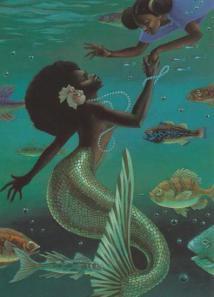 I always take a selfie on my birthday but this year I’ve been taking pictures all month long. Every time I’m out with friends, I ask someone to snap a photo with their phone so that there’s proof of our outing. I’ve just started writing again—850 words yesterday, 300 the day before. I’m hoping to get back up to a thousand words a day, which should allow me to finish The Return by Xmas. I have my first BPL-sponsored school visit in a few days and since I’m no longer teaching, I have plenty of days when I don’t have to leave the house. Which is good when I’m writing, but not so good when I’m not. Yesterday I went up to the Society of Illustrators to see The Original Art show and the Leo & Diane Dillon retrospective. The Original Art exhibit took up two floors and the artwork was just stunning. I was counting, of course—how many of these illustrators are people of color? How many are women of color? How many artists had multiple submissions? I barely noticed who won the gold and silver medals, perhaps because I was thinking about this article: “If you’re lucky enough to earn a living from your art, you’re probably white.” Which isn’t surprising but is nonetheless frustrating, and I found myself wondering as I wandered through the exhibit, “Who’s never had a chance to shine?” It’s an honor to be included in the show, but if you aren’t being asked to illustrate picture books, then there’s no chance your art will be deemed “good enough.” The outing soured further when I went up to the third floor and discovered that the Dillon exhibit was IN THE RESTAURANT. So it was hard to get close to the art since there were diners, and waiters, and
I always take a selfie on my birthday but this year I’ve been taking pictures all month long. Every time I’m out with friends, I ask someone to snap a photo with their phone so that there’s proof of our outing. I’ve just started writing again—850 words yesterday, 300 the day before. I’m hoping to get back up to a thousand words a day, which should allow me to finish The Return by Xmas. I have my first BPL-sponsored school visit in a few days and since I’m no longer teaching, I have plenty of days when I don’t have to leave the house. Which is good when I’m writing, but not so good when I’m not. Yesterday I went up to the Society of Illustrators to see The Original Art show and the Leo & Diane Dillon retrospective. The Original Art exhibit took up two floors and the artwork was just stunning. I was counting, of course—how many of these illustrators are people of color? How many are women of color? How many artists had multiple submissions? I barely noticed who won the gold and silver medals, perhaps because I was thinking about this article: “If you’re lucky enough to earn a living from your art, you’re probably white.” Which isn’t surprising but is nonetheless frustrating, and I found myself wondering as I wandered through the exhibit, “Who’s never had a chance to shine?” It’s an honor to be included in the show, but if you aren’t being asked to illustrate picture books, then there’s no chance your art will be deemed “good enough.” The outing soured further when I went up to the third floor and discovered that the Dillon exhibit was IN THE RESTAURANT. So it was hard to get close to the art since there were diners, and waiters, and ![Pageflex Persona [document: PRS0000419_00052]](https://i.gr-assets.com/images/S/compressed.photo.goodreads.com/hostedimages/1410079485i/11060385.jpg) tables, and steaming pans of food in the way. I guess I could have asked to speak to the curator, but instead I left thinking to myself, “Of course. Of course the art I really want to see is treated that way.” I can remember visiting Black-owned A&B Books when I first came to NYC and marveling at all the book covers that featured art by the Dillons. I’d never seen Black folks depicted so beautifully—and magically. I may print out a bunch of Dillon illustrations from the web and pin them to my bulletin board to inspire me as I write. Their art is the stuff of dreams…
tables, and steaming pans of food in the way. I guess I could have asked to speak to the curator, but instead I left thinking to myself, “Of course. Of course the art I really want to see is treated that way.” I can remember visiting Black-owned A&B Books when I first came to NYC and marveling at all the book covers that featured art by the Dillons. I’d never seen Black folks depicted so beautifully—and magically. I may print out a bunch of Dillon illustrations from the web and pin them to my bulletin board to inspire me as I write. Their art is the stuff of dreams…
My birthday is tomorrow but this email I received on Thursday is the best possible gift:
Ms. Elliott,
My daughter recently received The Magic Mirror for a gift a few weeks ago and it’s amazing. All I kept saying was ‘I have to find this author and say thank you, I have to.’ This has become my daughter’s favorite book and she takes it everywhere with us. Thank you for writing and publishing a book like that and all the others that you have, it means a lot to us.
I have to believe that even when we’re marginalized, our work will find a way to those who need it most. I’ve decided to draft an open letter to the We Need Diverse Books committee. They’re doing important work but lasting change won’t happen unless they address the source of the problem. I’m glad that Brown Girl Collective posted this quote from Audre Lorde on Facebook yesterday:
When we speak we are afraid our words will not be heard or welcomed. But when we are silent, we are still afraid. So it is better to speak.
~ Audre Lorde (1934-1992), poet, author and activist


October 21, 2014
be radical
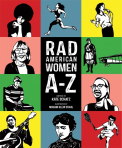 While I was in Sacramento I met Kate Schatz, Chair of the School of Literary Arts at Oakland School for the Arts and author of Rad American Women A-Z. Laura Atkins introduced us (of course) and persuaded Kate to take a look at my books (of course). Today I woke up and found this awesome photo on Twitter; Kate wrote, “This is my student Amaya, who looooooooooved The Deep! I knew she’d dig it.” With her awesome sense of style, Amaya could BE Nyla, and I hope the novel served as a “mirror” for her. Yesterday I said I was going to work on Judah’s Tale next but now I feel like Nyla’s got something more pressing to say…
While I was in Sacramento I met Kate Schatz, Chair of the School of Literary Arts at Oakland School for the Arts and author of Rad American Women A-Z. Laura Atkins introduced us (of course) and persuaded Kate to take a look at my books (of course). Today I woke up and found this awesome photo on Twitter; Kate wrote, “This is my student Amaya, who looooooooooved The Deep! I knew she’d dig it.” With her awesome sense of style, Amaya could BE Nyla, and I hope the novel served as a “mirror” for her. Yesterday I said I was going to work on Judah’s Tale next but now I feel like Nyla’s got something more pressing to say…
This morning I also found out that I will *not* be getting fully reimbursed for my Senegal trip back in July. And you know what? As annoying as that is, it’s ok. Because the research I conducted on that trip will enable me to write the final (?) book in the “freaks & geeks” trilogy. And if Amaya’s the only Black girl who reads The Return, that will be ok, too. As Nyla learns in Book 3, sometimes being radical means being on your own…




